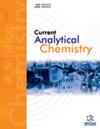Mechanical Activation as a Stage of Coal Sample Preparation in the Analysis of Rare Earth Elements Content by Inductively Coupled Plasma Mass Spectrometry
IF 1.7
4区 化学
Q3 CHEMISTRY, ANALYTICAL
引用次数: 0
Abstract
Background: Brown coals are recognized as promising sources of rare earth elements (REEs). Rare earths are present in both the mineral and organic parts of brown coal. Objectives: This study was conducted to investigate the influence of preliminary mechanical activation in the process of sample preparation prior to analyzing the concentrations of rare earth elements in brown coal samples of various origins and compositions. Methods: Four coal samples from different deposits in Russia were selected for the study. Samples were treated with mechanical activation, without reagents, or mechanochemical activation, with humic acids added externally as reagents. X-ray phase analysis was carried out with the selected samples. The quantities of rare-earth elements present in the samples were studied by the method of high-sensitivity inductively coupled plasma mass spectrometry (ICP-MS). Results: It was found that the mechanical activation of coal before dissolution in a mixture of nitric and hydrofluoric acids leads to an increase in the determined concentration of rare earth elements. For this study, the expediency of using only nitric acid as an optimal solvent for the elemental analysis of coal samples was shown. The total concentration of all REE after dissolution of nitric acid and mechanochemical activation with humic acid reached 2456 g/t in Vanchin coal, 968 g/t in Azeysky coal, and 24 g/t and 150 g/t in Itatsky and Spetsugli coals, respectively. Conclusion: Mechanical activation and mechanochemical treatment can greatly help to facilitate sample preparation of natural objects, such as coals for elemental analysis, but in some cases, only a change of solvent is sufficient. When developing technology for concentrating rare earth elements from coal involving grinding, it is necessary to take into account the fact that mechanical activation of coal changes its tendency to dissolve, which may affect the results of the analysis and should be taken into account during experiments.在利用电感耦合等离子体质谱法分析稀土元素含量时将机械活化作为煤样制备的一个阶段
背景:褐煤被认为是稀土元素 (REE) 的理想来源。稀土存在于褐煤的矿物部分和有机部分。研究目的本研究旨在调查在分析不同产地和成分的褐煤样品中稀土元素浓度之前,样品制备过程中初步机械活化的影响。研究方法研究选择了来自俄罗斯不同矿床的四个煤炭样本。样本采用机械活化(不使用试剂)或机械化学活化(外部添加腐殖酸作为试剂)处理。对所选样品进行了 X 射线相分析。采用高灵敏度电感耦合等离子体质谱法(ICP-MS)研究了样品中稀土元素的含量。研究结果研究发现,在硝酸和氢氟酸混合物中溶解前对煤炭进行机械活化可提高稀土元素的测定浓度。在这项研究中,仅使用硝酸作为煤炭样品元素分析的最佳溶剂的便利性得到了证明。经硝酸溶解和腐植酸机械活化后,Vanchin 煤中所有稀土元素的总浓度达到 2456 克/吨,Azeysky 煤中达到 968 克/吨,Itatsky 和 Spetsugli 煤中分别达到 24 克/吨和 150 克/吨。结论机械活化和机械化学处理可极大地促进煤炭等天然物体的元素分析样品制备,但在某些情况下,只需更换溶剂即可。在开发涉及研磨的煤炭稀土元素浓缩技术时,有必要考虑到煤炭的机械活化会改变其溶解倾向,这可能会影响分析结果,在实验过程中应加以考虑。
本文章由计算机程序翻译,如有差异,请以英文原文为准。
求助全文
约1分钟内获得全文
求助全文
来源期刊

Current Analytical Chemistry
化学-分析化学
CiteScore
4.10
自引率
0.00%
发文量
90
审稿时长
9 months
期刊介绍:
Current Analytical Chemistry publishes full-length/mini reviews and original research articles on the most recent advances in analytical chemistry. All aspects of the field are represented, including analytical methodology, techniques, and instrumentation in both fundamental and applied research topics of interest to the broad readership of the journal. Current Analytical Chemistry strives to serve as an authoritative source of information in analytical chemistry and in related applications such as biochemical analysis, pharmaceutical research, quantitative biological imaging, novel sensors, and nanotechnology.
 求助内容:
求助内容: 应助结果提醒方式:
应助结果提醒方式:


